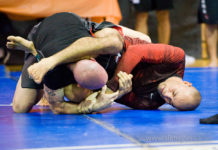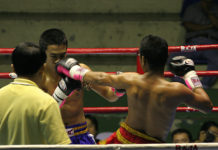Jiu-Jitsu started as a small man’s game.
If you’ve been training for more than a day, you’ve probably had about a dozen people tell you jiu-jitsu was made by smaller people, for smaller people. If you happen to be smaller yourself, you might feel some pressure. You’re expected to be good, technical.
You’ve no doubt been told about Royce Gracie. How he weighed 88 pounds and submitted a polar bear after keeping it in guard for seven hours.
But if BJJ was tailor made for your body type how come you’re getting destroyed night after night? When you put someone in closed guard, they just pick you up like a child. You tap out just from being side mounted.
What they don’t tell you about small guy jiu jitsu is that your learning curve is steeper. You won’t be able to mask your lack of skill with strength in the beginning. But over time, you are likely to excel because you were forced to be a technical fighter from the start.
The other thing they don’t tell you is that when people are undersized, they will use different tools than larger people. This can be frustrating when instructors take a “one size fits all” approach. Remember, jiu jitsu works for everyone, but everyone works their jiu jitsu differently.
Here’s a “starter kit” of sorts to get you on the right track early.
Disclaimer: Everything still works
I called this a “starter kit” because it’s not definitive. Like everyone else, you’ll settle into your high percentage strategies. No student should think that certain things “just don’t work” for smaller people. You certainly should never say that within earshot of an instructor, they’ll make it their personal mission in life to prove you wrong.
Everything works, but you still want to have a game that draws on your natural strengths. And for us (full disclosure, I am a natural rooster weight), we have a key advantage: our mobility.
Pick up a good open guard pass
Eddie Cummins once remarked that virtually all high level competitors are using standing guard passes. His reasoning for this was that standing passes largely avoid dangerous guards.
Being on your feet is a good way to use your speed and agility. This will be especially effective against beginners who rely on traditional closed guard. They won’t have an answer to a standing attack.
The Bullfighter Pass is a classic standing pass, and it has enough variations to keep you busy for awhile. Remember to set up your passes with circling and feigning to your opponent. Make them move to keep up with you. And never let them get grips.
Learn knee on belly
Many standing guard passes end with knee on belly, so learning it’s basics will be important. Getting rolled from side control by a larger opponent is very common, use knee ride to stay “floaty” and mobile.
Knee on belly can feel wrong in the beginning. Your early attempts may not work, but stick with it. I would focus on the transitions in the early going. It’s not a static position. Your goal is to flow through your opponents initial bridges and shrimps before settling into a more traditional side mount or s-mount.
Play around with open guards early
Rooster weight champion Marcelo Cohen recently said that open guards are an important part of dealing with larger opponents. And he’s not alone.
Take a look at the smallest purple or brown belts at your school. They are probably using an open guard. That’s because these guards use one of the most powerful parts of the body to keep opponents at bay: the legs
Closed guard is often introduced to new students before anything else. Don’t get me wrong, it’s an essential guard with powerful offensive tools. But long term, you will probably transition to open guards. Don’t think of them as more advanced, they’re just different.
A good way to start learning open guard concepts is to simply try and keep your feet on an opponent’s hips as they drive forward. If they pass your feet, work your knees in between them and shrimp out until you can get your feet back in the game. Open guard is a distance game, learn it sooner than later.
Study half guard
It can be tough to wrap your legs around the torso of a much larger person. But anyone can wrap their legs around single leg, which is why half guards are a good option. You’ll find that recovering half guard is far easier than full guard from a place like side control.
There are also half guards that play into being smaller, such as knee shield or deep half. In the beginning, just practice the basic control position. Get on your shoulder, get an underhook, and block the crossface with your other arm.
Get comfortable with the armbar and triangle sweeps
Having your submissions stacked will be a fact of life for awhile. It’s just too easy for larger opponents to tower over your armbar and triangle attempts. Invest in sweeps from these positions to turn the tables. You can even attempts submissions for the express purpose of hitting a sweep. Anytime people stack you they are giving you an opening to tip them over.
So what do you think? Do you have some go-to advice for undersized students? Let us know in the comments.
If you’d like more advice for beginners, here’s article I wrote on getting better by letting people tap you.
If you want something more comprehensive, here’s a good review we made for Henry Akin’s White to Blue Belt fundamentals course.

















